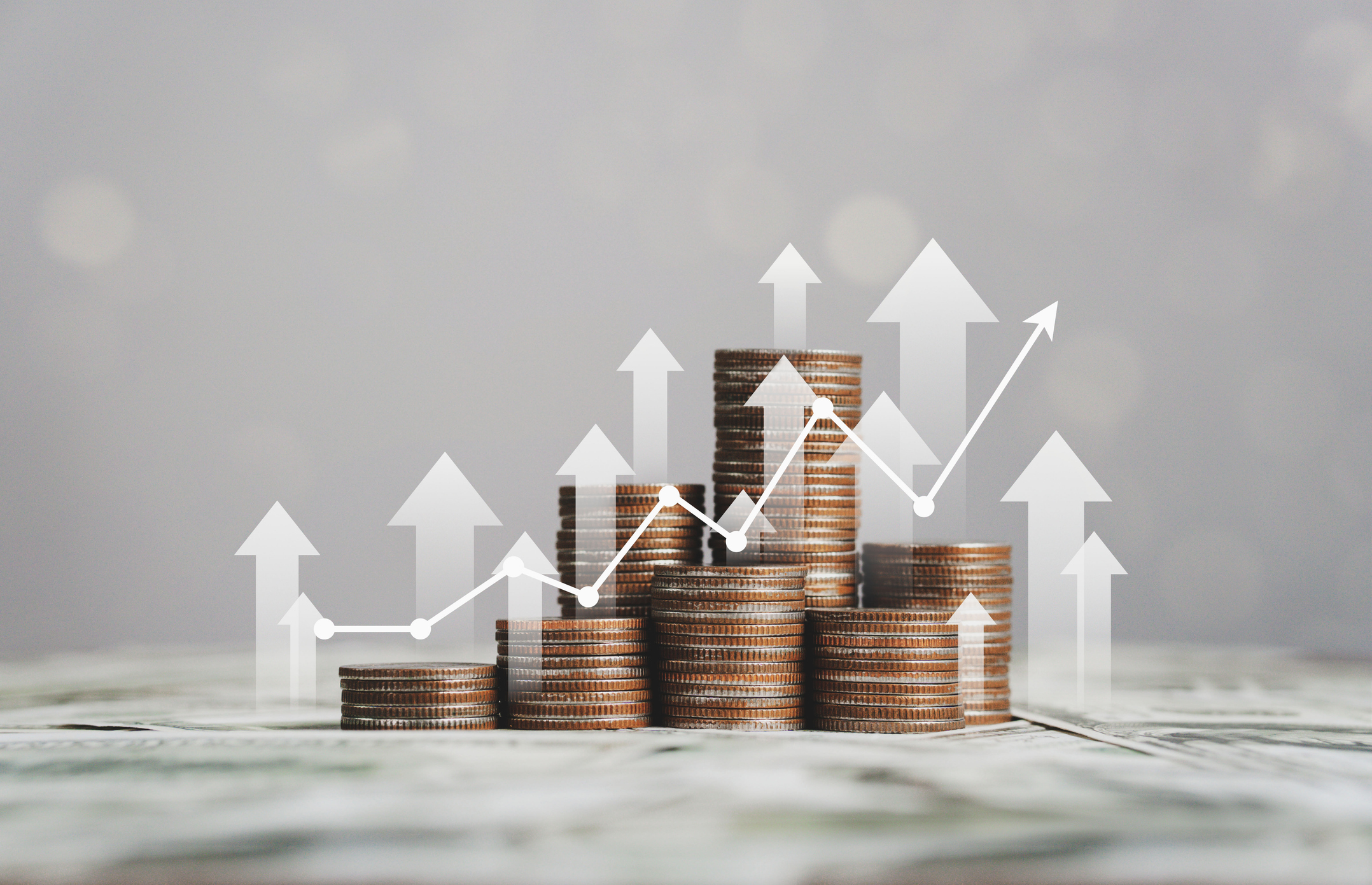Dividend Investing: Pros, Cons and Rules to Follow
Dividend investing is a profitable and proven method to generate solid long-term returns. But investors must be tactical when choosing the best dividend stocks.


Dividend investing is an excellent and proven way to grow your wealth over time.
So, what is dividend investing?
When someone says they're a dividend investor, it means they buy common and preferred stocks of public corporations that share earnings with their stakeholders, or dividend stocks.

Sign up for Kiplinger’s Free E-Newsletters
Profit and prosper with the best of expert advice on investing, taxes, retirement, personal finance and more - straight to your e-mail.
Profit and prosper with the best of expert advice - straight to your e-mail.
There are several great advantages to dividend investing, especially compared to other types of investing such as buying growth stocks or REIT stocks.
At the same time, dividend investors should avoid some common pitfalls. The first thing is to understand how a dividend yield works.
Basically, you want to avoid buying stocks with the highest dividend yields because that high yield can often indicate a future dip in both the dividend payment and the stock price.
There are other issues successful dividend investors must navigate.
Let's take a look at these pitfalls as well as the advantages of dividend investing.
Why dividend investing is a good idea
The chief advantage of buying and holding dividend stocks is that, over time, consistently profitable companies tend to raise their dividends as their earnings grow.
This allows their shareholders to earn more income as time goes on. Moreover, it helps push the underlying stock price higher.
For example, let's say a dividend stock pays a $1.00 per-share dividend and the stock price is $33.33. That gives it a 3.0% dividend yield.
So if the company hikes the dividend to $1.20, the investor will make 20% more income. The stock will often but not always rise to bring the dividend yield back to what it was before.
In this case, the share price would have to increase by $6.67 to $40 to hit that 3.0% yield.
Another more subtle advantage of dividend investing is that the best dividend stocks are often less volatile. This is because stocks that pay dividends tend to be more stable over time.
For example, the market often rewards companies it believes have the earnings power and cash flow strength to maintain their dividends. Often the stock price will trade within a well-defined historical dividend-yield range.
As a result, the share prices of dividend stocks tend to display more stability than growth stocks, which can gyrate wildly based on their own momentum and other non-fundamental traits.
Finally, dividend investing, especially with profitable companies, can directly benefit from companies that buy back their stock.
For example, let's take a dividend-paying company that buys back 3% of its shares each year.
As a result, the company might raise its per-share dividend by 3%. The same dividend cost is spread over fewer shares outstanding.
Growth stocks that don't pay dividends don't gain this advantage.
Is dividend investing a bad idea?
Dividend investing is not a "bad idea." But there are several pitfalls to avoid when you deploy the strategy.
One of the most common is avoiding high-yield dividend stocks. The market tends to have a good sense of when a company can't afford to maintain its present dividend.
As the stock falls, the dividend yield rises. That's because the market sees a dividend cut coming and reacts by lowering the price to maintain the yield after the cut.
Don't be tempted to buy these high-yield stocks before the dividend cut actually occurs.
Another pitfall is excessive trading. This can prevent you from getting favorable tax treatment on your dividends.
For example, to earn qualified dividend tax treatment, investors need to hold the dividend stocks for longer periods.
The exact qualified dividend rules are complicated, but it essentially involves holding a dividend stock for at least 60 days.
It also depends on the exact date when an investor buys the dividend stock and when the next dividend record date is set.
Just keep in mind that favorable tax treatment of dividend income accrues to long-term investors.
And note that distributions from REITs and MLPs (master limited partnerships) do not have this qualified tax treatment. The basic explanation is that these public companies are not structured as corporations.
To avoid this tax treatment pitfall, successful dividend investing means not day trading dividend stocks and constantly buying and selling shares.
Three rules for dividend investing
Investors who follow three simple rules can enjoy the benefits and avoid the pitfalls of dividend investing.
First, stick with dividend stocks that have at least a 10-year record of growing their dividend payments on an annual basis.
One way to do this is to screen for stocks using Seeking Alpha, Yahoo! Finance or even Value Line.
Second, avoid small-cap stocks, even if they have a good dividend track record.
Many of these companies have less cash flow available, or debt or revenue issues that make dividend investing difficult.
Third, target stocks with dividend yields no higher than 4.0% to 5.0% (and, rarely, 6.0%, unless the company has a very healthy financial condition).
This will allow the investor to avoid the high-yield dividend investing pitfall mentioned earlier.
And don't forget: You must always monitor your portfolio to be a successful dividend investor.
Just like pulling weeds is critical to the gardening process, keeping a clean portfolio is important for growing wealth through dividend investing.
Related content
Get Kiplinger Today newsletter — free
Profit and prosper with the best of Kiplinger's advice on investing, taxes, retirement, personal finance and much more. Delivered daily. Enter your email in the box and click Sign Me Up.

Mark R. Hake, CFA, is a Chartered Financial Analyst and entrepreneur. He has been writing on stocks for over six years and has also owned his own investment management and research firms focused on U.S. and international value stocks, for over 10 years. In addition, he worked on the buy side for investment firms, hedge funds, and investment divisions of insurance companies for the past 36 years. Lately, he is also working as Chief Strategy Officer for a tech start-up company, Foldstar Inc, based in Princeton, New Jersey.
-
 The AI Doctor Coming to Read Your Test Results
The AI Doctor Coming to Read Your Test ResultsThe Kiplinger Letter There’s big opportunity for AI tools that analyze CAT scans, MRIs and other medical images. But there are also big challenges that human clinicians and tech companies will have to overcome.
By John Miley Published
-
 The Best Places for LGBTQ People to Retire Abroad
The Best Places for LGBTQ People to Retire AbroadLGBTQ people can safely retire abroad, but they must know a country’s laws and level of support — going beyond the usual retirement considerations.
By Drew Limsky Published
-
 Financial Planning's Paradox: Balancing Riches and True Wealth
Financial Planning's Paradox: Balancing Riches and True WealthWhile enough money is important for financial security, it does not guarantee fulfillment. How can retirees and financial advisers keep their eye on the ball?
By Richard P. Himmer, PhD Published
-
 A Confident Retirement Starts With These Four Strategies
A Confident Retirement Starts With These Four StrategiesWork your way around income gaps, tax gaffes and Social Security insecurity with some thoughtful planning and analysis.
By Nick Bare, CFP® Published
-
 Should You Still Wait Until 70 to Claim Social Security?
Should You Still Wait Until 70 to Claim Social Security?Delaying Social Security until age 70 will increase your benefits. But with shortages ahead, and talk of cuts, is there a case for claiming sooner?
By Evan T. Beach, CFP®, AWMA® Published
-
 Retirement Planning for Couples: How to Plan to Be So Happy Together
Retirement Planning for Couples: How to Plan to Be So Happy TogetherPlanning for retirement as a couple is a team sport that takes open communication, thoughtful planning and a solid financial strategy.
By Andrew Rosen, CFP®, CEP Published
-
 Market Turmoil: What History Tells Us About Current Volatility
Market Turmoil: What History Tells Us About Current VolatilityThis up-and-down uncertainty is nerve-racking, but a look back at previous downturns shows that the markets are resilient. Here's how to ride out the turmoil.
By Michael Aloi, CFP® Published
-
 Stock Market Today: Stocks Surge to Close a Volatile Week
Stock Market Today: Stocks Surge to Close a Volatile WeekIt was another day with a week's worth of both news and price action, but it ended on a strongly positive note.
By David Dittman Published
-
 Home Insurance: How to Cut Costs Without Losing Coverage
Home Insurance: How to Cut Costs Without Losing CoverageNatural disasters are causing home insurance premiums to soar, but don't risk dropping your coverage completely when there are ways to keep costs down.
By Jared Elson, Investment Adviser Published
-
 Markets Roller Coaster: Resist the Urge to Make Big Changes
Markets Roller Coaster: Resist the Urge to Make Big ChangesYou could do more harm than good if you react emotionally to volatility. Instead, consider tax-loss harvesting, Roth conversions and how to plan for next time.
By Frank J. Legan Published